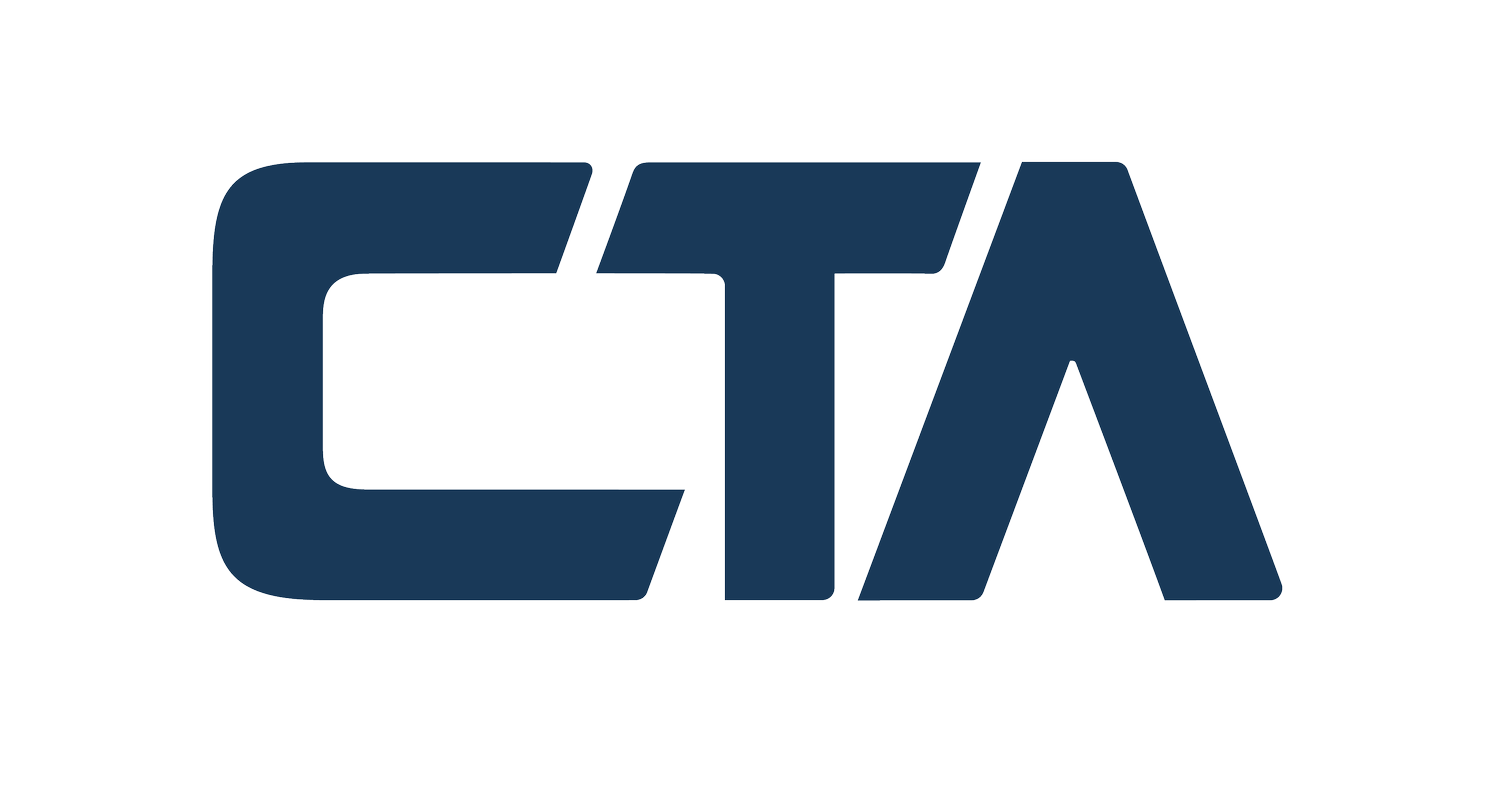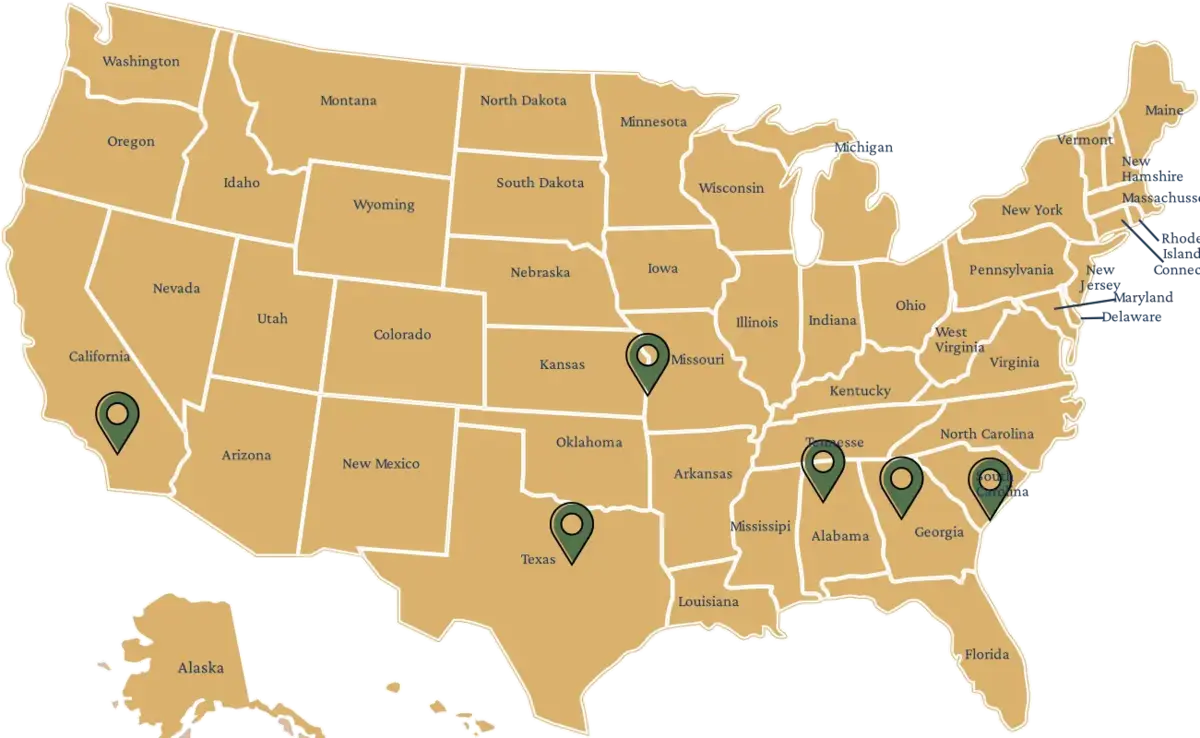TAX CREDIT EVALUATION SERVICES
Clean Energy Tax Credits (ITC)
100% free consultation: our friendly, US-based team is standing by to learn more about your business (or personal investment in clean energy) and help you understand whether or not you qualify for Clean Energy Tax Credits (ITC) and any related, stacking benefits at both federal and state levels.
Schedule a convenient time to find out if you qualify and what the next steps would be if you would like to proceed with the study & filing.
Your Initial Consultation ExplainedSchedule Your Free ITC Consultation
Our initial consultations are free of charge. In fact, we only charge for our services once we quantify your qualified ITC credits at both state and federal level.
An initial call with us is about:
- Helping you understand whether your company qualifies or not
- Giving you an understanding of the process and how we work with your team and your CPA to document all the qualified activity
- Talking through the potential ROI of an ITC tax credit study and making the filings
Let’s find out if an ITC study makes sense together.
No-Risk
Our evaluations are always 100% free, and we only invoice for our ITC consulting services out of credits found. If we don’t find you qualify for the credits we identify, you don’t have a bill.
On-Demand
If we identify ITC credits/incentives for which you qualify, we partner with your primary accounting firm to complete the necessary studies and filings as part of your broader tax strategy.
Entrepreneurs at Heart
We love what we do because our days are filled helping innovative & entrepreneurial firms free up capital for growth via the programs that help keep our country on track for a bright future.
The Problem:
The US tax code is so broad and complex that no primary firm can stay current on all aspects, AND companies end up paying more taxes than they should when nuanced & complex credits/incentives are not attained.
Increase Profitability and Finance Growth with Clean Energy Tax Credits
Since its introduction in 2006, companies have used the Clean Energy Tax Credits more commonly abbreviated as the “ITC” to save on taxes and finance growth, resulting in a 200x increase in the size of the US solar industry and other related clean energy projects.
Purpose of the ITC
With the goal of reducing the nation’s dependency on fossil fuels and to incentive investment in sustainable energy product within our borders the Clean Energy Tax credits were first instituted. It has since been expanded with additional benefits for related activities.

The program was extended in 2022 as part of the Inflation Reduction Act.
ITC State-Level Benefits
As with many tax credit programs, States also mirror Federal programs.
CTA’s assistance with ITC evaluations covers eligibility for both State and Federal programs.
Who Qualifies for Clean Energy Tax Credits (ITC)?
Individuals
Individuals can benefit from a 30 percent tax credit for installing solar systems or other clean energy upgrades on residential property.
Businesses
Commercial credits are available for installation on commercial or customer-facing sites as well as the creation of solar farms and other projects across many industries.
Benefits related to employment, location, and other nuanced aspects of particular installation are available as well.
Business Types/Industries that Quality for ITC Tax Credits:
If you don’t see your industry listed below, that does not mean you don’t qualify. Please reach out and we’ll be happy to have a no-risk consultation with you.
Manufacturers of Energy Products
If you build energy products such as solar components, you qualify for the manufacturing credit. We’ll be happy to help you evaluation your inputs to help you maximize your credits based on your domestic material usage.
Engineers
Engineers of environmental projects in particular should pay close to attention to maximizing credits internally and for clients. Engineering choices can expand or contract overall project budgets in light of all of the credits available.
Architects
Architects working on environmental projects in particular should pay close attention to maximizing credits internally and for clients. Lighting choices, for example, can make a huge difference in what credits are available.
Construction
Construction firms can help non-profits receive direct pay of 179D benefits and obtain offsets on projects for for-profit firms.
Construction firms also have additional benefits to consider related to the Apprenticeship, Prevailing Wage, Domestic Content opportunities.
Installation
Installation firms can help clients increase overall budgets by choosing the right approaches to projects.
Installation firms also have additional benefits to consider related to the Apprenticeship, Prevailing Wage, Domestic Content opportunities.
Institutions
Instead of a tax deduction, Non-Profits are eligible for direct pay of benefits, which can be used as financing for additional projects.
Institutions also often have additional benefits to consider related to the Apprenticeship, Prevailing Wage, Domestic Content opportunities.
Non-Profits
Instead of a tax deduction, Non-Profits are eligible for direct pay of benefits, which can be used as financing for additional projects.
Non-profits also often have additional benefits to consider related to the Apprenticeship, Prevailing Wage, Domestic Content opportunities.
Commercial Developers
As a form of financing, filing for credits on past projects and using all of the available credits on future projects is a wise decision. CTA can help with strategy around ITC benefits at both State and Federal level.
How to Determine Eligibility for State and Federal ITC-Related Programs
ITC programs are a fantastic opportunity, but also very complex. Our team of accountants, engineers, and attorneys has been helping businesses and individuals with specialized tax and incentive program assessment.
We coordinate with your primary accounting firm to provide the research and filing necessary for this type of credit.
Schedule a 100% free call with our team to discuss your eligibility and next steps.

Clean Energy Tax Incentives: Elective Pay Eligible Tax Credits
The Inflation Reduction Act of 2022 (“IRA”) makes several clean energy tax credits available to businesses; tax-exempt organizations; state, local, and tribal governments; other entities; and individuals. The IRA also enables entities to take advantage of certain clean energy tax credits through its elective pay provision (also colloquially known as direct pay). Elective pay allows several types of entities, such as tax-exempts and governments, to treat the amount of certain credits as a payment against tax on their tax returns and as a result receive direct payments for certain clean energy tax credits.
Publication 5817-G (6-2023) Catalog Number 94141A Department of the Treasury Internal Revenue Service www.irs.gov
Energy Generation & Carbon Capture
Tax Provision
Description
Production Tax Credit for Electricity from Renewables (§ 45, pre-2025)
For production of electricity from eligible renewable sources, including wind, biomass, geothermal, solar, small irrigation, landfill and trash, hydropower, marine and hydrokinetic energy.
Credit Amount (for 2022): 0.55 cents/kilowatt (kW); (1/2 rate for electricity produced from open loop biomass, landfill gas, and trash); 2.75 cents/kW if Prevailing Wage and Apprenticeship (PWA) rules are met 1,2,3,7
Clean Electricity Production
Tax Credit (§ 45Y, 2025 onwards)
Technology-neutral tax credit for production of clean electricity. Replaces § 45 for facilities that begin construction and are placed in service after 2024.
Credit Amount: Starts in 2025, consistent with credit amounts under section 45 1,2,3,6,7
Investment Tax Credit for
Energy Property (§ 48, pre-2025)
For investment in renewable energy projects including fuel cell, solar, geothermal, small wind, energy storage, biogas, microgrid controllers, and combined heat and power properties
Credit Amount: 6% of qualified investment (basis); 30% if PWA requirements met 1,4,5,6,8
Clean Electricity Investment Tax Credit (§ 48E, 2025 onwards)
Technology-neutral tax credit for investment in facilities that generate clean electricity and qualified energy storage technologies. Replaces § 48 for facilities that begin construction and are placed in service after 2024
Credit Amount: 6% of qualified investment (basis); 30% if PWA requirements met 1,4,5,6
Low-Income Communities
Bonus Credit (§ 48(e), 48E(h))
Application required
Additional investment tax credit for small-scale solar and wind (§ 48(e)) or clean electricity (§48E(h)) facilities (<5MW net output) on Indian land, federally subsidized housing, in low-income communities, and benefit low-income households. Allocated through an application process.
Credit Amount: 10 or 20 percentage point increase on base investment tax credit 7
Credit for Carbon Oxide Sequestration (§ 45Q)
Credit for carbon dioxide sequestration coupled with permitted end uses in the United States.
Credit Amount: $12-36 per metric ton of qualified carbon oxide captured and sequestered, used as a tertiary injectant, or used, depending on the specified end use; $60-$180 per metric ton if PWA requirements met.1,7
Zero-Emission Nuclear Power Production Credit (§ 45U)
For electricity from nuclear power facilities. Facilities in operation prior to August 16, 2022.
Credit Amount (for 2023): 0.3 cents/kWh (reduced rate for larger facilities); 1.5 cent/kWh if PW req’s met 1,7
Manufacturing
Tax Provision
Description
Advanced Energy Project For Credit (§ 48C)
Application required
For investments in advanced energy projects. A total of $10 billion will be allocated, not less than $4 billion of which will be allocated to projects in certain energy communities.
Credit Amount: 6% of taxpayer’s qualified investment; 30% if PWA requirements are met 1
Advanced Manufacturing Production Credit (§ 45X)
Production tax credit for domestic clean energy manufacturing of components including solar and wind energy, inverters, battery components, and critical materials.
Credit Amount: Varies by component
Vehicles
Tax Provision
Description
Credit for Qualified Commercial Clean Vehicles (§
45W)
For purchasers of commercial clean vehicles. Qualifying vehicles include passenger vehicles, buses, ambulances, and certain other vehicles for use on public streets, roads, and highways.
Credit Amount: Up to $40,000 (max $7,500 for vehicles <14,000 lbs) 9
Alternative Fuel Vehicle Refueling Property Credit (§ 30C)
For alternative fuel vehicle refueling and charging property, located in low-income and non-urban areas. Qualified fuels include electricity, ethanol, natural gas, hydrogen, and biodiesel.
Credit Amount: 6% of basis for businesses and can increase to 30% if PWA is met.
Fuels
Tax Provision
Description
Clean Hydrogen Production Tax Credit (§ 45V)
For producing clean hydrogen at a qualified, U.S.-based clean hydrogen production facility.
Credit Amount: $0.60/kg multiplied by the applicable percentage (20% to 100%, depending on lifecycle greenhouse gas emissions), amount increases if PWA is met 1,7
Clean Fuel Production Credit
(§ 45Z, 2025 onwards)
Technology neutral tax credit for domestic production of clean transportation fuels, including sustainable aviation fuels, beginning in 2025*
Credit Amount: $0.20/gallon ($0.35/gal for aviation fuel) multiplied by CO2 “emissions factor”; $1.00/gallon ($1.75/gal for aviation fuel) multiplied by CO2 “emissions factor” if PWA is met 1,7

Clean Energy Tax Incentives: Elective Pay Eligible Tax Credits
The Inflation Reduction Act of 2022 (“IRA”) makes several clean energy tax credits available to businesses; tax-exempt organizations; state, local, and tribal governments; other entities; and individuals. The IRA also enables entities to take advantage of certain clean energy tax credits through its elective pay provision (also colloquially known as direct pay). Elective pay allows several types of entities, such as tax-exempts and governments, to treat the amount of certain credits as a payment against tax on their tax returns and as a result receive direct payments for certain clean energy tax credits.
Publication 5817-G (6-2023) Catalog Number 94141A Department of the Treasury Internal Revenue Service www.irs.gov
Energy Generation & Carbon Capture
Tax Provision
Description
Production Tax Credit for Electricity from Renewables (§ 45, pre-2025)
For production of electricity from eligible renewable sources, including wind, biomass, geothermal, solar, small irrigation, landfill and trash, hydropower, marine and hydrokinetic energy.
Credit Amount (for 2022): 0.55 cents/kilowatt (kW); (1/2 rate for electricity produced from open loop biomass, landfill gas, and trash); 2.75 cents/kW if Prevailing Wage and Apprenticeship (PWA) rules are met 1,2,3,7
Clean Electricity Production
Tax Credit (§ 45Y, 2025 onwards)
Technology-neutral tax credit for production of clean electricity. Replaces § 45 for facilities that begin construction and are placed in service after 2024.
Credit Amount: Starts in 2025, consistent with credit amounts under section 45 1,2,3,6,7
Investment Tax Credit for
Energy Property (§ 48, pre-2025)
For investment in renewable energy projects including fuel cell, solar, geothermal, small wind, energy storage, biogas, microgrid controllers, and combined heat and power properties
Credit Amount: 6% of qualified investment (basis); 30% if PWA requirements met 1,4,5,6,8
Clean Electricity Investment Tax Credit (§ 48E, 2025 onwards)
Technology-neutral tax credit for investment in facilities that generate clean electricity and qualified energy storage technologies. Replaces § 48 for facilities that begin construction and are placed in service after 2024
Credit Amount: 6% of qualified investment (basis); 30% if PWA requirements met 1,4,5,6
Low-Income Communities
Bonus Credit (§ 48(e), 48E(h))
Application required
Additional investment tax credit for small-scale solar and wind (§ 48(e)) or clean electricity (§48E(h)) facilities (<5MW net output) on Indian land, federally subsidized housing, in low-income communities, and benefit low-income households. Allocated through an application process.
Credit Amount: 10 or 20 percentage point increase on base investment tax credit 7
Credit for Carbon Oxide Sequestration (§ 45Q)
Credit for carbon dioxide sequestration coupled with permitted end uses in the United States.
Credit Amount: $12-36 per metric ton of qualified carbon oxide captured and sequestered, used as a tertiary injectant, or used, depending on the specified end use; $60-$180 per metric ton if PWA requirements met.1,7
Zero-Emission Nuclear Power Production Credit (§ 45U)
For electricity from nuclear power facilities. Facilities in operation prior to August 16, 2022.
Credit Amount (for 2023): 0.3 cents/kWh (reduced rate for larger facilities); 1.5 cent/kWh if PW req’s met 1,7
Manufacturing
Tax Provision
Description
Advanced Energy Project For Credit (§ 48C)
Application required
For investments in advanced energy projects. A total of $10 billion will be allocated, not less than $4 billion of which will be allocated to projects in certain energy communities.
Credit Amount: 6% of taxpayer’s qualified investment; 30% if PWA requirements are met 1
Advanced Manufacturing Production Credit (§ 45X)
Production tax credit for domestic clean energy manufacturing of components including solar and wind energy, inverters, battery components, and critical materials.
Credit Amount: Varies by component
Vehicles
Tax Provision
Description
Credit for Qualified Commercial Clean Vehicles (§
45W)
For purchasers of commercial clean vehicles. Qualifying vehicles include passenger vehicles, buses, ambulances, and certain other vehicles for use on public streets, roads, and highways.
Credit Amount: Up to $40,000 (max $7,500 for vehicles <14,000 lbs) 9
Alternative Fuel Vehicle Refueling Property Credit (§ 30C)
For alternative fuel vehicle refueling and charging property, located in low-income and non-urban areas. Qualified fuels include electricity, ethanol, natural gas, hydrogen, and biodiesel.
Credit Amount: 6% of basis for businesses and can increase to 30% if PWA is met.
Fuels
Tax Provision
Description
Clean Hydrogen Production Tax Credit (§ 45V)
For producing clean hydrogen at a qualified, U.S.-based clean hydrogen production facility.
Credit Amount: $0.60/kg multiplied by the applicable percentage (20% to 100%, depending on lifecycle greenhouse gas emissions), amount increases if PWA is met 1,7
Clean Fuel Production Credit
(§ 45Z, 2025 onwards)
Technology neutral tax credit for domestic production of clean transportation fuels, including sustainable aviation fuels, beginning in 2025*
Credit Amount: $0.20/gallon ($0.35/gal for aviation fuel) multiplied by CO2 “emissions factor”; $1.00/gallon ($1.75/gal for aviation fuel) multiplied by CO2 “emissions factor” if PWA is met 1,7
Notes
The information in this document may be subject to change as guidance is issued or finalized. For all IRA clean energy tax credits, please see irs.gov/cleanenergy for further details and eligibility requirements.
1 Credit is increased by 5 times for projects that pay prevailing wages and use registered apprentices. Apprenticeship requirements do not apply for §§ 45L and 45U. Prevailing wage and apprenticeship requirements do not apply to certain projects, including certain projects of less than 1 megawatt or those that began construction prior to January 29, 2023.
2 Credit is increased by 10% if the project meets certain domestic content requirements for steel or iron, and manufactured products.
3 Credit is increased by 10% if located in an energy community.
4 Credit is increased by up to 10 percentage points for projects meeting certain domestic content requirements for steel, iron, and manufactured products.
5 Credit is increased by up to 10 percentage points if located in an energy community
6 Section 168(e) provides favorable depreciation treatment for facilities or property qualifying for this tax credit. These facilities or property will be treated as a 5-year property for purposes of cost recovery, leaving them with lower taxable income in the earlier years of a clean energy investment.
7 Credit rate is adjusted annually for inflation.
8 See section 48 for more detail and applicable exceptions to the credit rate.
9 The entities eligible for elective pay of the commercial clean vehicle credit is a subset of the entities eligible for elective pay of other credits. In addition, starting January 1, 2024, the amount of a new clean vehicle or previously owned clean vehicle tax credit (but not a commercial clean vehicle credit) can be transferred to a dealer for an equivalent reduction in the eligible vehicle’s sales price.
Founder & CEO Mike Woeber Talks CTA Culture & How We Partner with Accounting Firms to Ensure Amazing Results for Clients
“I spent 24 years in public accounting…and during that time, I saw a need for very specialized services. Things that you would think a CPA firm would do, but they are not really staffed up for or have the right personnel to do….We want our employees to do two things:
We want them to do a very defendable and solid credit incentive delivered to the client.
And we also want them to be sure the client is happy while we do it.”
Schedule Your Consultation Partner with CTAOur Mission:
To educate and advise our clients of tax incentives in a Collaborative, Timely, and Accurate manner.
Our Process Pays for Itself:
Step #1: INTRO CALL
Determine Whether You Qualify
You choose a convenient time on our availability calendar for us to ask you some basic questions about your business and determine whether or not you are a candidate for the various incentives in which we specialize.


Step #2: RESEARCH & PREPARATION
Run the Study & Analysis
Working in unison with your team & your primary accounting firm, we gather the requirements and make the calculations that determine the value of the credits or incentives as required by law.
Step #3: COMPLETION
Complete the Filing & Receive the Credit
Once we determine the credits available and have everyone’s approval, we prepare the filings for submission by your firm (along with other filings you/they may be handling) and invoice for our services.









